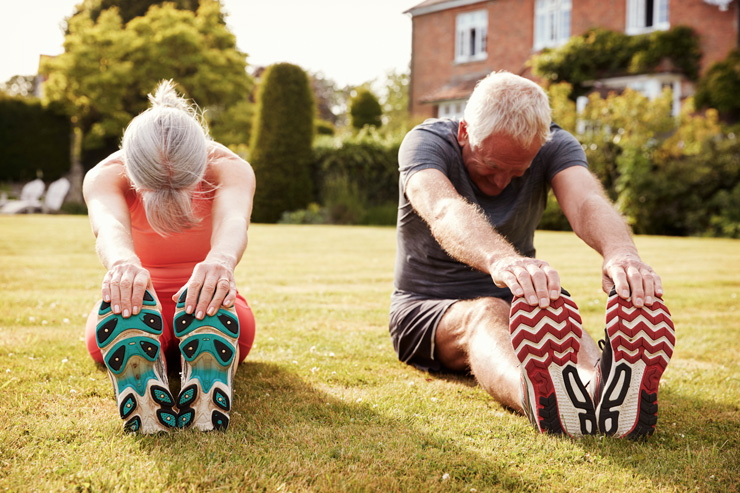
Staying active with regular physical activity is good for your heart, your muscles, your stamina, and your mind…no matter your age!
—
Staying healthy is important at any age, but it’s especially important as you get older. Fortunately, keeping fit and active doesn’t have to be difficult or complicated thanks to the variety of low-impact options to keep seniors healthy without too much wear and tear on their joints.
The type of exercise isn’t as important as the act of doing it. Some people can’t imagine walking every day, but they find the weightlessness of a pool helps them do more than they would have thought possible. Other people may not find the pool accessible (or enjoyable), but may be able to lift weights, stretch, or use resistance bands while seated.
Pick and choose from the following low-impact workouts:
Swimming
Swimming is one of the go-to exercises for seniors for a good reason: It offers a comprehensive, full-body workout that is fantastic for your heart, your muscles, and your mental health. That said, swimming isn’t something that everyone has regular access to. And, since swimming isn’t a weight-bearing exercise, it won’t help your bone density the same way that other exercises can. The weightlessness of being in water does make it lower impact than other activities like walking, but the weightlessness also means that it’s not necessarily optimal for treating osteoporosis.
Stretching
Stretching helps your range of motion, improves your posture, and can help with your stability. People who regularly stretch report that their sense of well-being and functioning improve, as does their sense of self-reliance (your self-efficacy). Regardless of your age or level of mobility, there are stretches that are right for you. There’s no shortage of websites out there offering suggested stretching regimens for seniors, so find a routine that makes sense for you and your body, and do what you can when you can.
Cycling
Cycling is a great cardio workout for people who find running, or even walking, too high impact. Pedaling a bicycle — in the gym or around your neighborhood — is less stress on the joints than the constant, repeated impact of your feet hitting the ground. In addition to being great for weight loss, heart health, and cholesterol, cycling benefits seniors’ immune systems as it helps you work on your balance and stability. Biking also gets you out and about to explore the world around you. It’s no wonder that in America, 30% of new bike riders are seniors.
Yoga
Research indicates that yoga can lower the stress hormone cortisol, help people feel relaxed, and ease symptoms of anxiety and depression. Although there are many types of yoga, the practice generally involves stretching, breathing, and meditation exercises. Ideally, you will want to focus on a yoga practice that emphasizes posture, breath, and holding poses for long periods of time. The balance required for holding yoga poses is also linked to better balance and fewer falls, as well as increasing in bone strength, and possibly even bone density.
Paddling
Paddling a canoe or kayak is a fantastic cardio workout. The core strength that paddling develops can improve your stability, mobility and flexibility while building muscle strength in your back, shoulders, arms, torso and legs. While paddling may seem very vigorous, it is actually a low impact workout that can be done by people of all ages, even people with weak joints. Paddling is great way to reconnect with water and nature. You can paddle during a camping trip, or paddle with a partner in a tandem kayak. You can even get an angler kayak and go fishing! While paddlers will need a body of water nearby (and a kayak or canoe) it’s generally a very accessible form of exercise.
Tai Chi
Tai Chi is a form of martial arts built around very deliberate, careful movements of the body. Rather than fighting, most tai chi practitioners learn sets of movements that they work through in class or by themselves. Like yoga, a tai chi class is a fantastic way to improve your balance. It’s weight-bearing, which means it can help with bone density. It can also reduce the risk of falls, increase your strength and stamina, improve your core strength, help with your posture and back pain. Ultimately, Tai Chi is an exercise gentle enough that even people with chronic illnesses can perform it.
You may also enjoy reading Weightlifting: A Key to Better Heart Health at Any Age, by Jane Sandwood